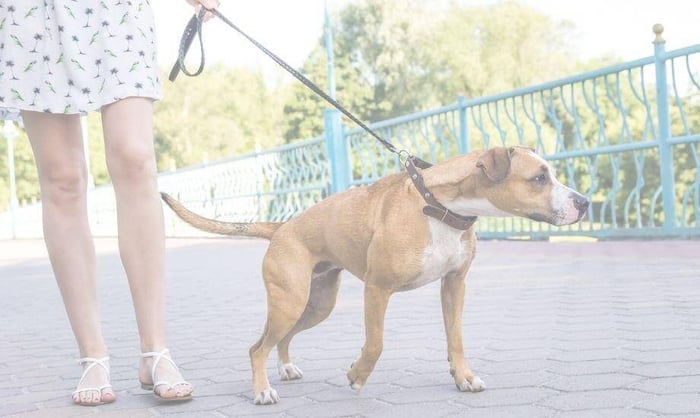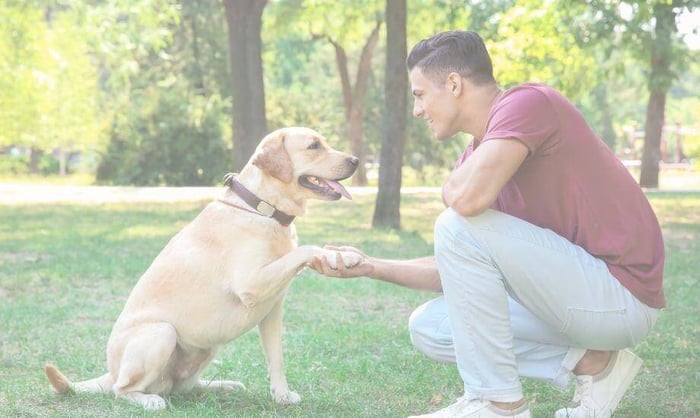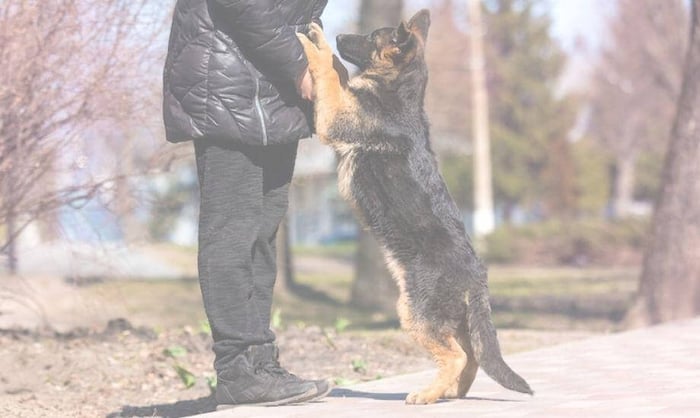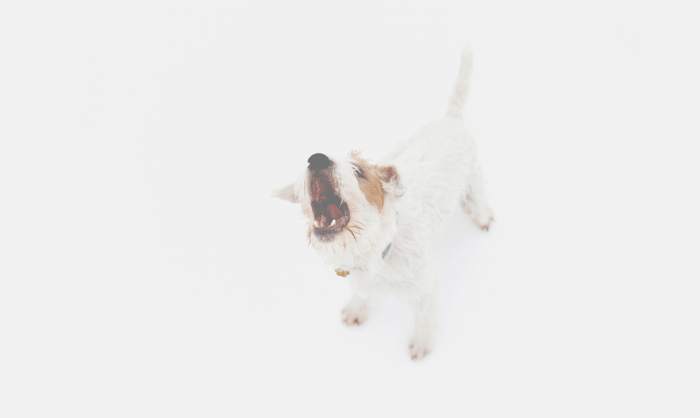As the weather gets nicer and the days get longer, it seems more and more people are out and about enjoying all that summer has to offer! When you have a dog who is reactive on a leash, this can mean that your daily walks get more and more difficult. Leash Reactivity in Dogs can definitely be improved with behavioural management, so let’s take a look at why some dogs might become reactive and how we can help!
🐩Why Do Some Dogs Get Reactive On Leash?
Leash reactivity in dogs is an overreacting to an outside stimulus. Your pup may be reactive to other dogs, people, cars, bikes, etc. We are going to focus on dogs who are reactive to other pups, as this is one of the most common reactions we see.
So what causes our four-legged friends to overreact in these circumstances? There can be a variety of reasons why your dog might start showing typical reactive behaviour (ie. barking, crying, lunging on the leash).
😨Fear
If your dog had a bad experience with another dog in the past, or if they were not well socialized or introduced to other dogs as a puppy, they may react in a way to tell other dogs to back off due to fear or uncertainty. Fear can also be passed on genetically. If a dog’s mother is fearful, it is much more likely that the puppies will be fearful too.
☹️Frustration
Maybe your pup has the opposite problem and wants to be friends with every dog he or she meets! It can be frustrating for our buds when they are restrained by a leash and unable to say hi. These dogs usually interact well with four-legged pals when they are off-leash. This behaviour typically begins as happiness or excitement at seeing a potential new four-legged friend, but over time this can develop into frustration due to their inability to interact since they are restrained on a leash.
🐶Learned Behaviour
If your dog has been rewarded in the past either by getting something positive or avoiding a negative experience, they will keep doing what worked! Furthermore, if a behaviour is negatively reinforced every time that your pup sees another dog, like for example, a leash correction such as a sharp pull on the leash, or a collar that tightens with pressure choking your dog, this can train your dog to react even more in the future.
It is important to determine why your dog is being reactive so that you can best work with them and a certified trainer to move past their reactive behaviours.
🐕How Do We Manage On-Leash Reactivity in Dogs?
Manage The Environment
As we already mentioned, dogs learn through experience. It is important not to let your dog practice or rehearse the behaviour we are trying to change (ie lunging, barking, growling, etc). The best way to prevent this from happening is to manage the environment around your dog. If they are reactive to other dogs, this can mean avoiding other dogs by walking at quieter times of day, crossing the street to maintain space between your pup and another dog, using parked cars and other objects as visual blocks, and even using your own body to block your dog’s line of sight. Initially, you will want to keep a greater distance from other dogs to keep your pup under threshold (meaning they aren’t so overwhelmed by the stimulus that they start exhibiting reactive behaviour). Over time, your dog's threshold may grow and you can make their comfortable distance between other dogs smaller. This process is called desensitization, and your dog’s threshold should always be respected. When your dog is showing signs that they are at their threshold, you should definitely not force them to go past this and go at their pace. Desensitization is often used with counter-conditioning, which we will talk about next!
Change How Your Dog Feels
It is also important to change your dog’s emotional response to see Leash Reactivity in Dogs using counter-conditioning. This is best done with a healthy supply of your pup’s fave high-value treat! Every time that your dog sees another pup on a leash, reward him or her with a treat. It needs to be a high-value food that your dog can’t help but be excited by! A great game to play with your dog is called engage-disengage. This involves you staying whatever distance is required away from another dog so that your pup isn’t showing reactive behaviour. Allow your dog to freely look at the other pup. As soon as your dog chooses to actively disengage from looking at the other dog, reward them with a high-value treat. Ideally, you want your dog to focus on you and make eye contact after disengaging. Once this happens, you want to reward your pup with a treat jackpot! This way not only will you be your dog’s safe place, but they will know that when they look to you they get “paid” with their treat reward - big time!
Teach Focus
When you teach a command such as focus that requires your dog to look at you instead of the other dog. To teach focus, hold a treat in front of your face and make a kissing noise to get your dog’s attention. Immediately reward him or her for looking at you and making eye contact. As you practice this command, remember to mark the desired behaviour (eye contact) with a yes or good boy/girl /dog and a reward. Begin to hold the treat further away from you while asking for focus. Eventually you can use other distractions and make sure to practice in a variety of environments. Your dog cannot bark or lunge at another dog while also following the focus command, so this is a great tool to have as it brings their focus onto you rather than the stimulus. It does take lots of practice for this command to be effective, so be patient!
Practice Safely!
Make sure that you stay a safe distance from other dogs, and use a properly-fitting Y-shaped harness or face harness to prevent your dog from getting loose. If your dog is extremely reactive, they may need to wear a basket muzzle. It can be helpful to use a harness or leash to let others know that your dog needs distance. There are some harnesses that come with a placard asking for space, or a sleeve that fits on your leash that notifies others that your dog is reactive.
Although it can take time to train your dog to change their behaviour when they see another Leash Reactivity in Dogs, your patience and consistent work will pay off!






